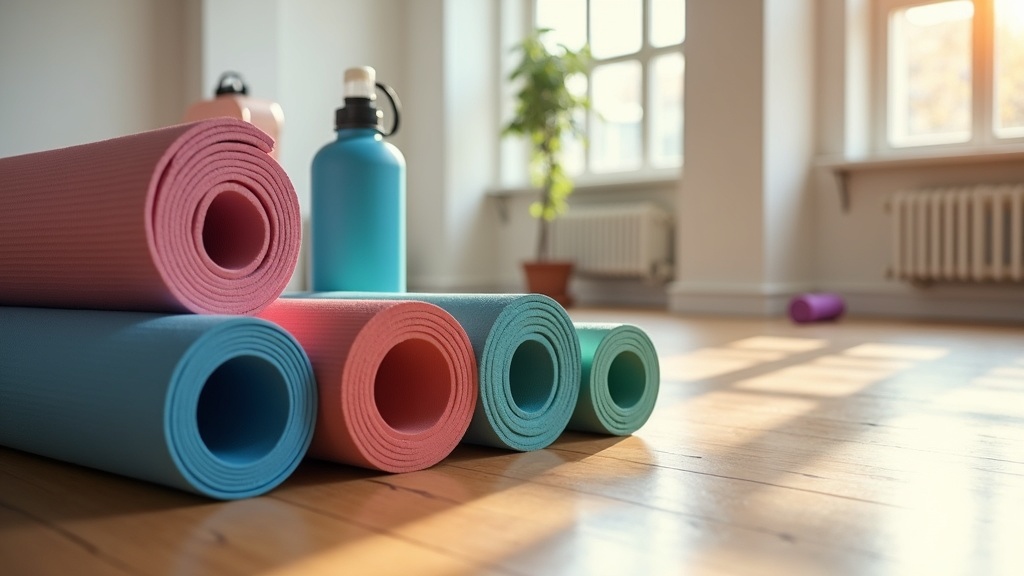Warmups and cooldowns are two parts of workouts that sometimes get skipped or rushed, but they can make a huge difference when it comes to keeping your body healthy and your performance on point. I’ve seen firsthand how people who skip these steps are more likely to get injured or feel sore later, even if they don’t realize it at the time. Taking just 5 to 10 extra minutes before and after exercise can really help your body get the benefits of every workout, whether you’re a beginner or looking to step up your performance.

Why Warmups Matter Before Exercise
Warming up before exercise isn’t just an old gym teacher rule; it gets your body ready and helps you ease into physical activity instead of jumping in cold. Starting with a good warmup increases blood flow, which brings oxygen and nutrients to your working muscles. It also gently raises your heart rate and body temperature, so everything’s ready to work a little harder without getting shocked.
Think of your muscles like cold rubber bands; trying to stretch them suddenly makes them more likely to snap. A few minutes of movement helps your muscles, joints, and even your tendons loosen up. You’ll notice that exercises feel a bit easier after a warmup, and your balance, coordination, and reaction time improve too. All of these things mean a lower chance of strains or sprains.
Research from sports medicine journals consistently shows that people who warm up get injured less often and perform better, whether they’re running, lifting, or playing sports. Even just jogging slowly or doing arm circles will help your body get the message that it’s time to move.
How a Cooldown Helps After Exercise
A cooldown may seem less important when you’re tired at the end of a workout, but it actually helps your body wrap things up safely. Cooling down lets your heart rate and breathing gradually come back to normal instead of dropping too quickly. It slows everything down at a comfortable pace, which feels a lot better than just stopping all of a sudden.
When you keep moving after exercise, like with slow jogging, walking, or easy stretches, you help flush waste products like lactic acid out of your muscles. This can mean less post-exercise soreness and stiffness. Plus, cooldowns can lower your chance of feeling dizzy or faint, which sometimes happens if you stop too fast, especially after cardio workouts.
Many athletes use a few minutes of light movement and stretching as a mental break, too. It’s a good chance to reflect on your workout, notice how your body feels, and get mentally ready for whatever’s next. If you practice mindfulness or breathing exercises, this is the perfect time to add them in for additional recovery.
Breaking Down What a Good Warmup Looks Like
You don’t need fancy equipment or tons of time; a warmup can be simple and quick. I like to break it down into two parts: general warmup activities and dynamic stretches.
- General Warmup: This is anything that raises your heart rate and warms your body, like jogging, jumping jacks, or even brisk walking for about 3 to 5 minutes.
- Dynamic Stretching: Dynamic movements work best because they get your joints moving and mimic whatever exercise you’re about to do. Examples include high knees, arm swings, leg swings, walking lunges, or bodyweight squats.
Try not to mix up static stretching (where you hold a position) with warming up. Those longer holds are a great fit for your cooldown instead, because they can temporarily lower strength and speed if you do them right before a workout.
If you’re gearing up for a specific activity, add a few sport-specific movements to your warmup. For example, doing shadow boxing before boxing sessions or light dribbling if you play basketball helps prepare your brain, too.
It can help to choose movements that gradually get more intense—start easy, then pick up the pace. This ensures your heart, muscles, and joints all get a gentle introduction to your main workout. You can even add things like hip rotations, ankle circles, or torso twists to bring attention to often-forgotten joints.
Common Mistakes People Make
I’ve noticed over the years that the most common mistake is people just skipping warmups or cooldowns altogether. Sometimes it’s because they’re short on time, or they think it’s not necessary if they’re not working out hard. But skipping these steps leads to more tightness, soreness, and a bigger chance of injury.
Another mistake is doing the wrong type of stretching at the wrong time, like long, static stretches during warmup. This isn’t very effective for getting your body ready. The reverse is true, too—skipping stretching after a workout can mean you miss out on flexibility benefits.
It also helps to avoid going from an intense workout to suddenly sitting or lying down. Give yourself those few extra minutes to help your body transition; it’s worth it for how you’ll feel later. If you’re pressed for time, even just two or three minutes are better than nothing. Building the habit is more important than being perfect every session.
RealLife Benefits I’ve Noticed
Adding in warmups and cooldowns has made workouts feel a lot better for me and the people I train with. Muscles feel less stiff the next day, and there’s less worry about tweaks or pulls. On days I rush through and skip these parts, my body feels it—soreness shows up faster and sticks around longer. I’ve also spotted improvements in flexibility and overall performance for regulars who make warmups and cooldowns part of their routine.
Plenty of fitness coaches and physical therapists back this up, too. They all point out that these short routines help create a safer, more comfortable workout and can even help your mental focus and motivation. The difference really adds up over weeks and months.
Which benefits matter most to you? For some, it’s less muscle soreness and more energy the next day; for others, it’s about avoiding injuries or staying motivated. Whatever your goals, these habits make consistency easier, giving you the confidence to keep pushing your limits safely.
Frequently Asked Questions About Warmups and Cooldowns
Q: Do I always need to warm up before a workout?
A: It’s a good idea, even for shorter or lighter workouts. It gets your body and mind ready and helps prevent injuries across all activity levels.
Q: Can I use static stretches to warm up?
A: Dynamic movements work better before a workout because they keep your body moving and get your muscles loose. Save long holds for the cooldown when your body is already warm.
Q: What if I’m short on time?
A: Even 3 to 5 minutes can do the job. A quick circuit or some active movements are better than nothing and still help your body out.
Q: Is a cooldown needed after every workout?
A: It’s really helpful, especially after highintensity activity. Your body recovers better and you’ll feel less sore afterward.
BONUS
If you are looking to reach your goals faster and more efficiently you probably should consider proper nutrition. One of the fundamentals are electrolytes you probably have heard about them but don’t even know what they are and which their benefits are. Make sure to check this out and find out everything about them and how to incorporate them properly into your diet and help you reach your goals faster.

Leave a Reply